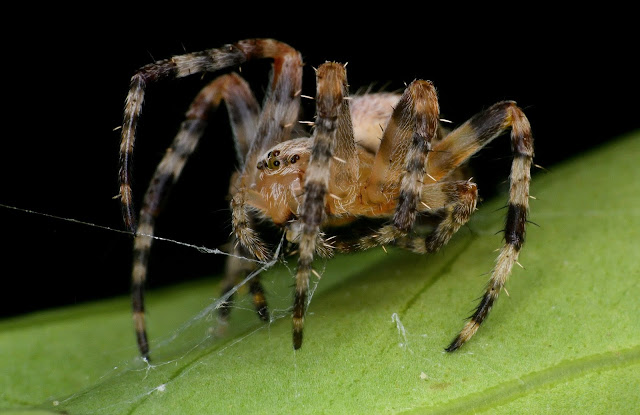Spiders............the gardener's friend.
I love photographing spiders and the following images were all taken with my Nikon D500 and Macro lenses. Whilst many people are scared of Spiders, these fascinating creatures help keep our houses and gardens free from many 'far worse' insects.
 |
| Garden Spider |
Spiders are arachnids, a class of arthropods that also includes scorpions, mites, and ticks. There are more than 45,000 known species of spiders, found in habitats all over the world.
Spiders range in size from the tiny Samoan moss spider, which is .011 inch long, to the massive Goliath Birdeater, a tarantula with a leg span of almost a foot.
 |
| Harvestman Spider |
For most people, the thought of spiders conjures up images of tarantulas and other (seemingly) fearsome creatures. Though all spiders have venom to one degree or another, only a handful are dangerous to humans. Those include the Black Widow and the Brown Recluse, but neither are found in Europe.
The vast majority of spiders are harmless and serve a critical purpose: controlling insect populations, that could otherwise decimate crops. Without spiders to eat pests harmful to agriculture, it’s thought that our food supply would suffer.
 |
| Garden Spider consuming its prey |
Most species are carnivorous, either trapping flies and other insects in their webs, or hunting them down. They can’t swallow their food as is, so inject their prey with digestive fluids, then suck out the liquified remains.
 |
| Wasp Spider 'wrapping up' an unfortunate bee |
Though not all spiders build webs, every species produces silk. They use the strong, flexible protein fiber for many different purposes: to climb, to tether themselves for safety in case of a fall, to create egg sacs, to wrap up prey, to make nests, and more.
 |
| One of our smallest spiders........the Jumping Spider |
Most spider species have eight eyes, though some have six. However, despite all of those eyes, many don’t see very well at all. A notable exception is the jumping spider, which can see more colours than us humans. Using filters that sit in front of cells in their eyes, the daytime hunting, jumping spider can see in the red spectrum, green spectrum, and in UV light.
 |
| European Green Huntsman |
The greatest threat to spiders, is habitat loss, which comes from changing agriculture practices, as well as the prolific use of insecticides.
Although they do not enjoy an excessive level of public sympathy, spiders are an important animal group for humans, since they free us of a large number of pest insects and are very important predators in the functioning of natural systems.
 |
| Crab Spider and above, catching a Hoverfly |
Although they do not enjoy an excessive level of public sympathy, spiders are an important animal group for humans, since they free us of a large number of pest insects and are very important predators in the functioning of natural systems.
If you enjoy reading my photoblogs, please 'subscribe' or 'share', utilising
the links at the top of the page.
To read my previous blogs, please click on the 'Previous Blogs' link
at the top left of this page.





Comments
Post a Comment